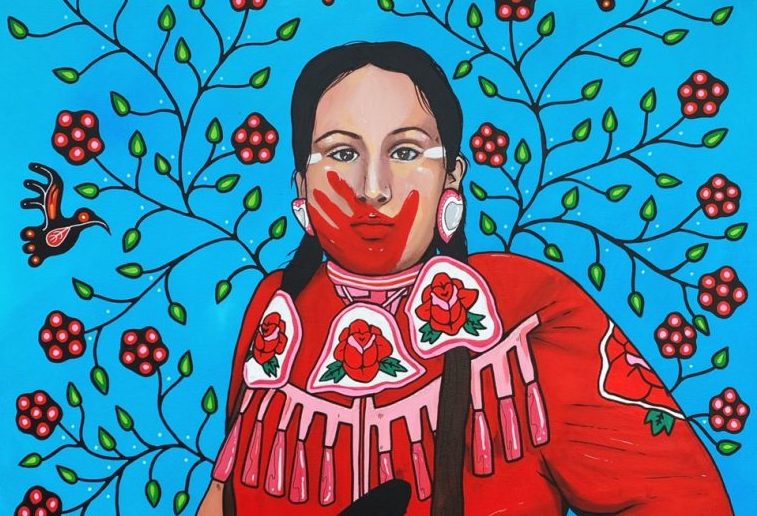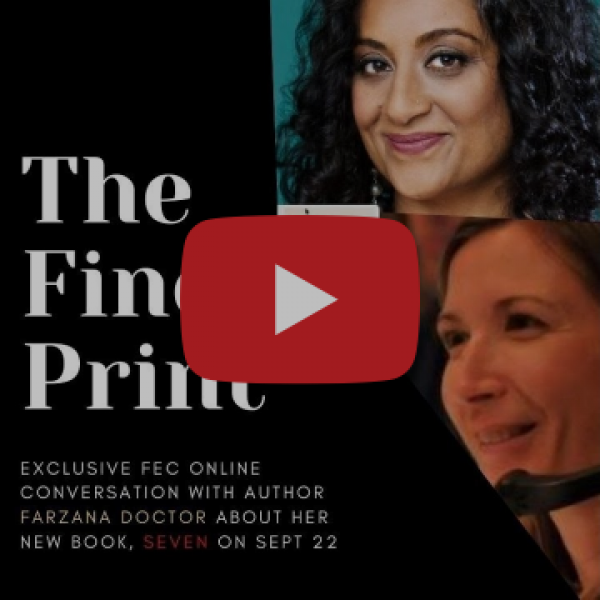
Imagine being saddled at birth with a debt you must repay to gain your freedom? That question fired up the imagination of author and activist Jael Richardson as she created the dystopian world in the novel, Gutter Child, where a nation is divided into communities of the privileged Mainland and the policed Gutter. Is it a metaphor for racism?
As a recent guest on The Fine Print, a conversation series with contemporary feminist authors, Richardson teased out this interpretation with attendees, reminding them that while she mentions the skin colour of her characters, no one is labelled Black or white. There are Olo people and Sossi people in this world, and readers project the systemic oppression on her disadvantaged young protagonist, Elimina Dubois, and other students who attend an Academy where they train and learn how to work off their debts to society. Elimina was taken from the Gutter at birth and raised in the Mainland as part of a social experiment initiated by the Mainland government. But when her mother dies (on page five) she ends up at the Academy, alone and afraid.
“I started thinking about laws and constitutions and how they’re designed,” Richardson told the attentive audience when asked about the catalyst for the book. “How systems are built, and who builds them and who they’re built for.”
Richardson admits she had endless discussions with her editor as she worked out the logistics of her imagined have- and have-not world. What did the geographical landscape look like? How many socio-economic classes were there? What resources did they have? What opportunities or employment options were available to some and not others? Why?
Though fictional, the world is remarkably recognizable as any society where race and class determine who is privileged and who is disadvantaged. The book adds gender to that mix — women struggle against harsh and unjust situations and are forced to make hard choices. “What happens to women and their children in any world says a lot about the conditions of that world,” Richardson said in the interview. The difficult circumstances in which she placed her characters compelled her to add a disclaimer at the beginning of the book:
“This book is a work of fiction that explores a perilous world rooted in injustice. As in life, the effects of injustice impact many of the characters. Take care with your heart and your mind as you read. Pause and rest as required. These are difficult times.”
As in the real world, Gutter Child offers no quick fix to systemic racism. Systems protect the people who created them. And Richardson isn’t optimistic of that changing anytime soon. “People at the top would have to be willing to acknowledge that they [systems] are built on lies and falsehoods, and be willing humbly to take it all apart and give it to all of us to help build them.”
To avoid being overwhelmed by what isn’t changing, Richardson focussed on how people create bonds and community, even when forced into disadvantaged spaces. “Why do people make choices? And why do other people make different choices? And what makes each of those things different or important to pay attention to?”
Ultimately, Richardson hopes to get people reading and that Gutter Child can start conversations about oppression and how to break down unjust systems. The book certainly got the conversation flowing after the formal interview on The Fine Print as guests lingered to chat to the author about how the book jolted them into seeing and thinking in new ways about systemic oppression. One person said she was reading it with her twelve-year old son; another planned to do so with their young niece.
Richardson is considering a sequel to Gutter Child, which has become a national best seller since its publication in January 2021 and is a finalist for the Amazon Canada First Novel Award that will be announced May 27, 2021. The follow up book promises to be another dystopian tale – set in a nowhere land that could be anywhere. “As a Black woman who has sort of only lived in one place, but also felt like I belong to no place…dystopia is my favourite place to play.”
You can “play” more with Jael Richardson, who founded and serves as the Artistic Director, at the Festival of Literary Diversity (FOLD), which runs until May 15, 2021. If you’re late to sign up, recordings of author interviews, workshops and readings are available to watch and re-watch until May 31, 2021.
The Fine Print is hosted and produced by Liisbeth Media and Lana Pesch in the Feminist Enterprise Commons (FEC).
Watch the video highlights of the conversation here on YouTube.
Read an excerpt from Gutter Child (Harper Collins, 2020) © Jael Richardson 2021.

















